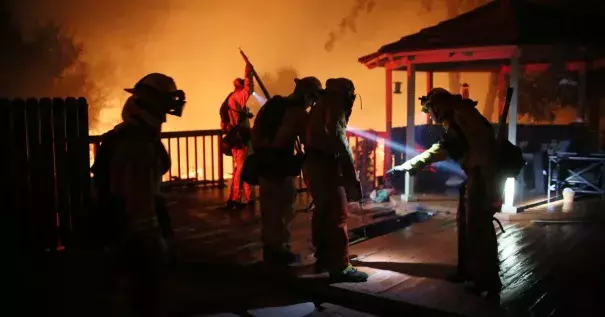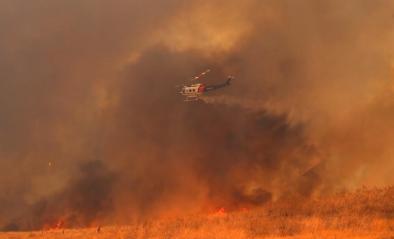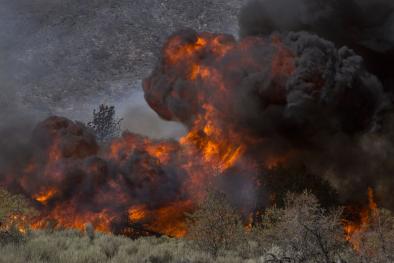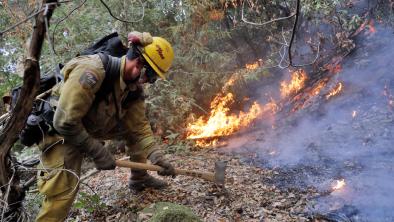California’s wildfires are not "natural" — humans made them worse at every step

Though seasonal wildfires are a natural occurrence in the Golden State, humans are making them worse and more dangerous every step of the way.
And California’s fires are just the latest unfolding tragedy in what has already been an epic fire season across the United States as a whole, with more than 9.2 million acres burned and smoke choking many parts of the West.
...
There are some unique weather conditions that are driving the exceptionally swift California fires, like strong winds and high temperatures. But long-term trends linked to global warming also exacerbated this year’s fire season across the United States.
“Fuel, wind, and long-term dry conditions: Those are the three facts that are really what’s causing this right now,” said the National Weather Service’s Hockenberry.
What followed during the summer was a period of intense, dry heat throughout the state, including the highest temperatures ever recorded in the Bay Area.
“When it dried out, it dried out really hard, and it got really hot,” Hockenberry said.
It was the warmest April through September on record, Abatzoglou said. “Big fires typically happen a year after it being quite wet.”
...
John Abatzoglou co-authored a study last year that found that climate change due to human activity accounted for roughly 55 percent of the aridity in Western US forests between 1979 and 2015.
This led to a doubling of the area torched by forest fires than would have occurred in the absence of human-caused factors.
However, the California fires are burning through grasses and shrubs, not forests, and Abatzoglou was hesitant to make similar pronouncements about the current blazes.
“I would be cautious in saying climate change was a significant factor here,” he said. “This is very different from the fires we had [last month in forests] in much of the Western states.”
...
“The length of the fire season is increasing in the Mountain West,” said the University of New Mexico’s Hurteau. “The mechanism for that is in part because [as] the atmosphere warms up, the air expands and can hold more moisture.”
This warming draws moisture out of plants, creating drier conditions earlier in the season. It also causes an earlier snowmelt in the spring, leading to more arid conditions in the summer.
“We could have a lot more fire on these landscapes,” Hurteau said.
Wildfires also contribute to global warming: Flames coursing through woodlands and grasses send greenhouse gases and particulates into the air.
“When the plant material in forests combusts, we’re putting a lot of emissions of different types into the atmosphere,” said Hurteau.
Some kinds of particles trap heat, while other particles have a cooling effect. Both pose a huge health hazard, and when they land on snowcapped mountains and glaciers, they accelerate melting
Related Content






